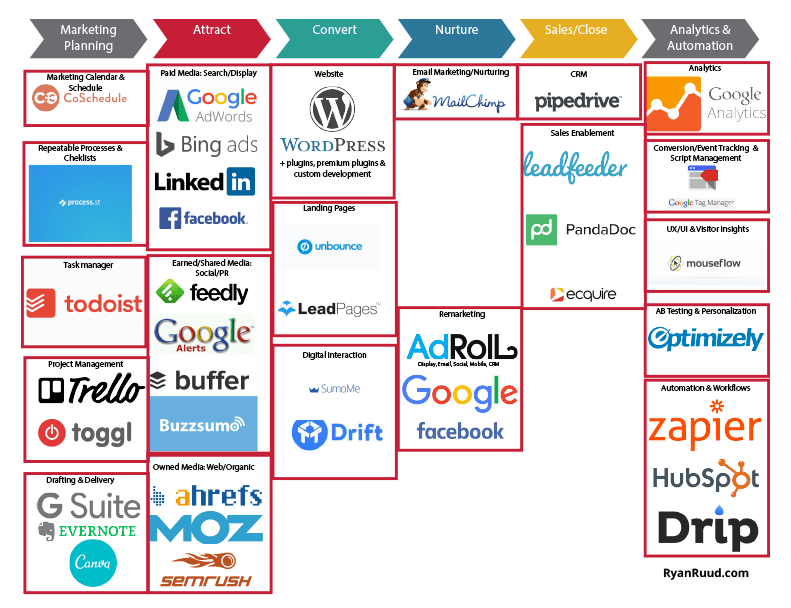Marketing technology, or MarTech, is a fast-paced industry with new updates every year. MarTech has given 21st Century marketers the ability to cut costs, increase sales, and shrink the amount of labor typically required to keep track of various marketing components.
But perhaps the most impressive offspring of MarTech is digital analytics. By combining various digital capabilities, marketers can track nearly every consumer behavior imaginable. Because of this, mapping the customer journey has never been easier or more vital to business success.
Your Digital Marketing Stack
In MarTech, your digital marketing stack is your collection of software programs that help you track lead generation, sales, advertising, productivity, and customer service data.
Today, no digital marketing stack is complete without some level of customer, web visitor, affiliate, or even employee data tracking. This tracking requires the help of analytics platforms.
What is Digital Analytics?
Digital analytics is the process marketers take to track key performance indicators or metrics.
Today’s digital tools – computers, mobile devices, and software platforms – collect data. Initially, the volume of data recorded from these digital tools was overwhelming for everyday marketers. Within a few years, experts developed ways to organize data into actionable insights.
Now, digital analytics helps specialists in every field (marketing, finance, human resources, medical, etc.) to collect, organize, filter, and understand information about a target audience, industry trend, and/or team performance. Digital analytics is categorized into either quantitative or qualitative information:
- Quantitative data pertains to the literal number of times a particular action or event occurs. It is the easiest type of data to understand because it represents hard and fast numbers, such as the number of sales or the number of times a user visits a web page.
- Qualitative data takes a deeper look at quantitative data to understand how, why, and to what degree a certain action occurred. For example, customer feedback in their own words counts as qualitative data. All non-numerical data falls under this category.
Properly combining all available quantitative and qualitative data helps an analyst or marketer get the “full picture.”
The primary goal of digital analytics is to inform decision-makers on the best course of action. In marketing, analytics tells experts who their customers are, why they buy, and the most efficient process for converting those customers.
Databases
Much of today’s data is…




